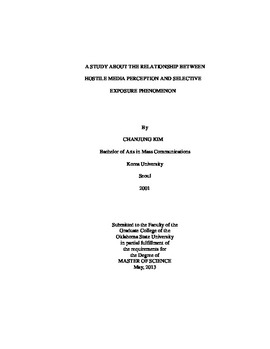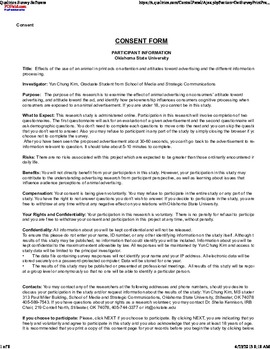| dc.contributor.advisor | Kim, Kenneth E. H. | |
| dc.contributor.author | Kim, Chanjung | |
| dc.date.accessioned | 2014-09-24T14:18:06Z | |
| dc.date.available | 2014-09-24T14:18:06Z | |
| dc.date.issued | 2013-05-01 | |
| dc.identifier.uri | https://hdl.handle.net/11244/11098 | |
| dc.description.abstract | This study aimed to determine how hostile media perception theory would change under selective exposure phenomenon. The 2008 National Annenberg Election Survey (NAES) data were used for analysis. First, the results revealed that selective exposure phenomenon existed during the 2008 presidential election throughout all types of media. Second, it was found that people who selectively exposed themselves to the politically congruent campaign media program tended to perceive the media coverage as in favor of their supporting candidate. Finally, the results showed that unlike the previous findings, people with strong partisanship tended to perceive the campaign media coverage as in favor of their supporting candidate. The theoretical and practical implications were discussed. Also, the limitations of the study were suggested. | |
| dc.format | application/pdf | |
| dc.language | en_US | |
| dc.publisher | Oklahoma State University | |
| dc.rights | Copyright is held by the author who has granted the Oklahoma State University Library the non-exclusive right to share this material in its institutional repository. Contact Digital Library Services at lib-dls@okstate.edu or 405-744-9161 for the permission policy on the use, reproduction or distribution of this material. | |
| dc.title | Study About the Relationship Between Hostile Media Preception and Selective Exposure Phenomenon | |
| dc.type | text | |
| dc.contributor.committeeMember | Holtzhausen, Derina | |
| dc.contributor.committeeMember | McKinnon, Lori | |
| osu.filename | Kim_okstate_0664M_12716.pdf | |
| osu.accesstype | Open Access | |
| dc.description.department | Mass Communications | |
| dc.type.genre | Thesis | |

